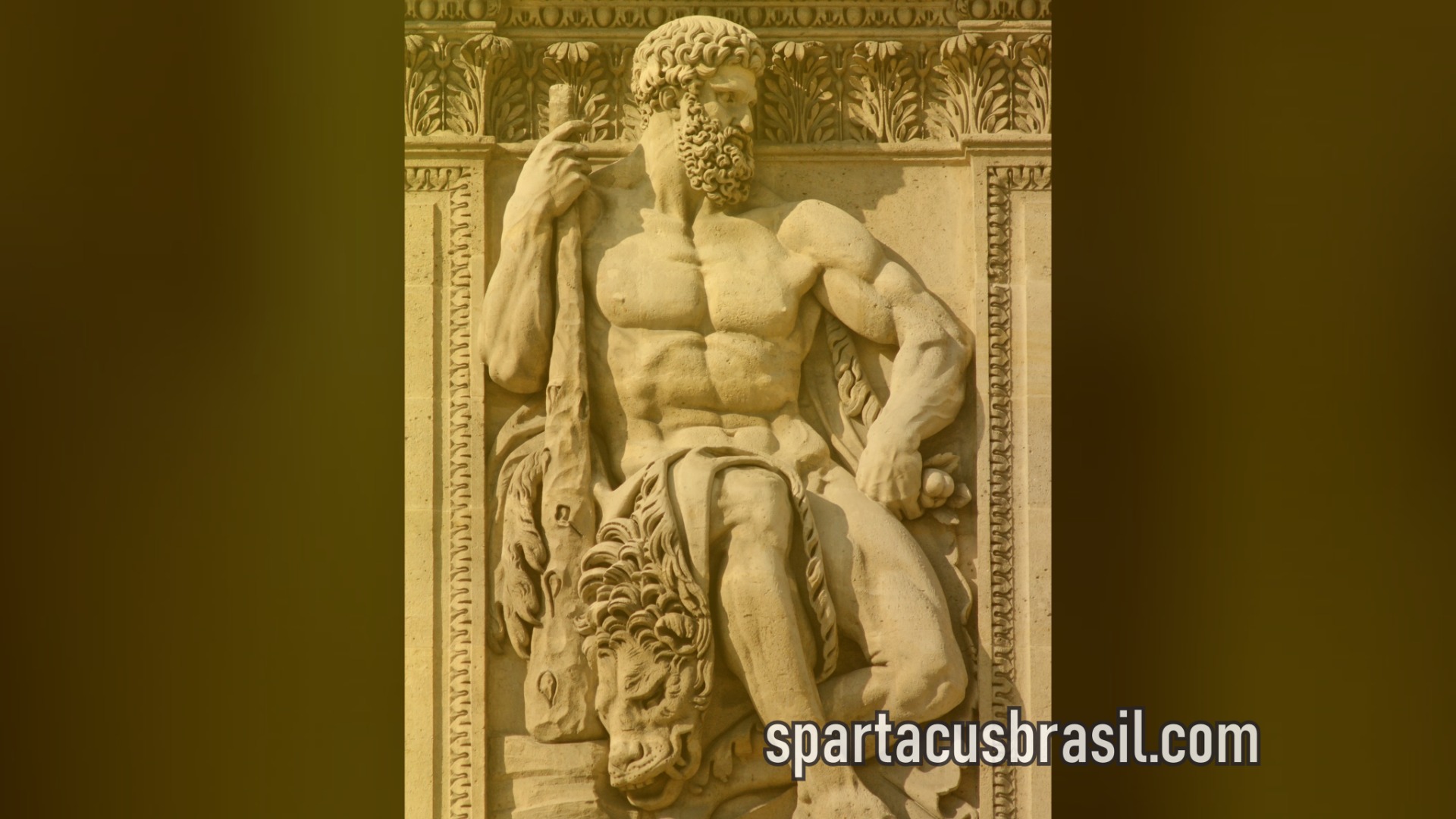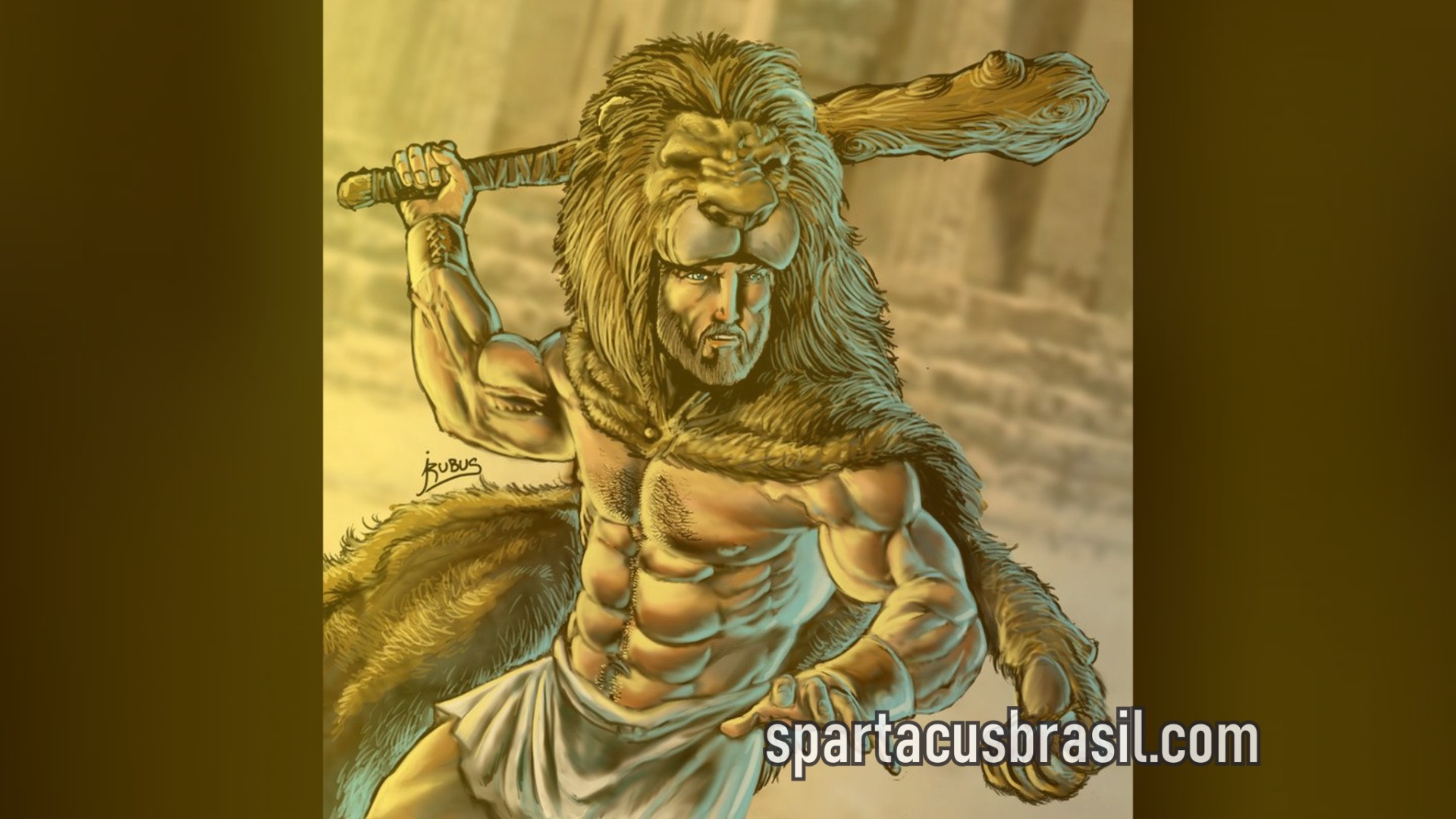The True Kratos from God of War
As for Kratos from God of War, we all already know! But what about the Cratos that really existed within Greek Mythology? Have you heard of or know their incredible story?
Hercules was, in Greek Mythology, one of the most relevant characters. In addition to being the son of Zeus, Hercules was known for his 12 Labors, see what they were.

Hercules is the Latin name given by the ancient Romans to the hero of Greek Mythology "Heracles", son of Zeus (Jupiter for the Romans) and the mortal Alcmena. Ancient Roman sources indicate that the "imported" Greek hero came to replace an ancient mythological pastor called by the peoples of Italy as Garanus, who is famous for his physical strength and bravery. While the Hercules myth incorporated much of the Greek character's iconography and mythology, he also had some characteristics and legends that were markedly Roman.
The twelve Labors of Hercules are a series of archaic episodes linked together by a continuous narrative, related to a penance that would have been fulfilled by one of the greatest Greek heroes, Heracles, better known in english for the Romanization Hercules, therefore, do not be confused when we mention both as one, okay?
In his 12 jobs, Hercules often had the company of a young companion. According to Licimnius and other ancient authors, such as Iolau, his nephew. Although he was initially supposed to do only ten jobs, this aid meant that he had to do two more, as Euristeu did not count Hydra's work, because Iolau had helped him, or the Augias stables, for which he received payment for the work. , and that was carried out by the waters of a river. The order found in Pseudo-Apolodoro is as follows:
In the Peloponnese, he strangled the Nemean Lion: the largest lion in the world, son of the monsters Typhon and Echidna, the inhabitants of the place were unable to kill, because the only thing that could pierce the leather was the Lion's claw. killing him, the first having been unsuccessful, strangled him, after fighting him. When the fight was over, he pulled the Lion's claw and took the Lion's leather to use it as a garment. The creature became the lion constellation.

Check: Nemean Lion and Hercules
He killed Lernaean Hydra, the monstrous daughter of two grotesque creatures, Echidna and Typhon. She was a serpent with a dragon's body, which had nine heads (one of them partially gold and immortal, which regenerated), were barely cut, and exhaled a vapor that killed anyone nearby. Hercules killed her by cutting off their heads while her nephew Iolau prevented her reproduction by burning her wounds with red-hot brandings. The goddess Hera sent help to the serpent, a huge crab, but Hercules stepped on it and the animal became the constellation Cancer. Finally, the hero bathed his arrows with the serpent's blood so that they would be poisoned.
Check: Lernaean Hydra and Hercules
He captured the Erymanthian Boar, which was ravaging the surroundings, when he was fatigued after chasing him for hours. When Euristeu saw the animal on the hero's shoulder, he was so afraid that he went into hiding in a bronze cauldron. The animal's fangs were shown in the temple of Apollo, in Cumas.
He ran over to the Ceryneian Hind, a legendary animal, with golden horns and bronze feet. The doe, which ran with astonishing speed and never got tired, was Taígete, a nymph who, in order to escape Zeus' persecution, was transformed by Artemis into the animal. As she had an unsurpassed speed, Hercules pursued her tirelessly for a year until, exhausted, she was hit by an arrow shot by the hero. Lightly wounded, it was carried on the hero's shoulders to the kingdom of Euristeu. In another version of the myth, Heracles had to capture the deer, but without hurting it; he chased her for a year, until he managed to catch her with a net, but she ended up getting hurt.
The hero then placed the blame on Euristeu, so that Artemis would be angry with him. In a third version, Hercules took a year to do the next job, which was to capture the doe that inhabited Mount Cerineus. This animal appeared to be more timid than dangerous, and sacred to Artemis; Hercules finally imprisoned her and was taking her to Euristeu when he met Artemis, who was very angry and threatened to kill him for daring to capture his animal; but when she found out about the works, she agreed to let Hercules take the animal, on the condition that Euristee would release him as soon as he had seen him.

In the lake Stymphalian, with his poisoned arrows, he killed Birds whose wings, head and beak were made of iron, and which, due to their gigantic size, intercepted the rays of the sun in flight. With his bow, he managed to kill some and the others, expelled the other countries.
In one day he cleaned King Augean stables, which contained three thousand oxen and which had not been cleaned for thirty years. They were so smelly they gave off a deadly gas. For this, Hercules diverted two rivers.
Hercules seventh task was to bring the Cretan Bull alive to Euristeus, who in turn would hand him over to Hera. The bull was enraged and terrified the people of the Greek island of Crete, because Poseidon, the god of the seas, had offered it to Minos, the local king, in sacrifice, and the king did not have the courage to sacrifice such a beautiful and strong animal. Hercules not only captured him but, mounted on the animal, took him to Euristeu.
Check: Cretan Bull and Hercules
He punished Diomedes (king of Thrace), son of Ares, who possessed horses that vomited smoke and fire, and which he gave to eat the foreigners that the storms brought to his shore. The hero handed him over to the voracity of his own animals.
Hercules overcame the Amazons, took Queen Hippolyta from them, taking possession of the magic belt she wore.
He killed the giant Geryon, a monster of three bodies, six arms and six wings, and took the oxen that were guarded by a two-headed dog, and a dragon of seven.
Hercules eleventh job was to harvest the golden snitches from the Garden of Hesperides, after killing the hundred-headed dragon that guarded them. The dragon was killed by Atlas, at his request, and while working, he held the sky on his shoulders in place of the titan.
Hercules last job was to bring his guardian, the dog Cerberus, from the world of the dead. Hades authorized him to take Cerberus up to Earth on condition that he managed to dominate him without using his weapons. Hercules fought him only with the strength of his arms, almost choked him, dominating him. Then he took it to Euristeu, who, in fear, ordered him to return it.
Check: All about Hades God
As for Kratos from God of War, we all already know! But what about the Cratos that really existed within Greek Mythology? Have you heard of or know their incredible story?
Roman Mythology: Are Greek and Roman Gods the Same Thing? In a simplified way, yes! With the exception of their respective Names. Check out everything about the Roman Gods below.
Behemoth is a terrifying Monster from both the Bible and Greek Mythology. According to the Old Testament, he will rival Leviathan at the end of time. Learn more about this terrestrial monster below.
The Erinyes (or Furies) are, in Greek and Roman Mythology, women represented as a symbol of revenge. They are very similar to the Keres and, also, often confused, check it out.
Although Dragons are of Chinese origin, the Greeks also had their representations for the Dragon figure. We've separated for you 3 exclusive Dragons that only exist in Greek Mythology!
Pegasus is, in Greek and Roman Mythology, a white winged horse given by Zeus to Bellerophon to defeat the terrible Chimera, an exotic monster of this mythology, check it out.
Jason, in Greek Mythology, is one of the most relevant Characters, so much so that, in addition to being a Hero, he is the son of Zeus, thus: a demigod. He knows more about its history, from Medea and Argonauts to the Golden Fleece.
The Griffin, in Greek Mythology, is a mystical creature with the body of a lion and an eagle's head. Unlike the Greek sphinxes (which are perverse and treacherous), Griffins are good creatures and often help demigods.
Do you already know the Legend of Atlantis? Find out now if this legendary (and hypothetically "lost") city actually existed. Plato portrays it very well within Greek Mythology and Religion, check it out.
The Trojan Horse was a huge wooden horse used as a military strategy by the Greeks during the Trojan War. If in fact it existed, it was one of the greatest feats of warfare in history! Know.